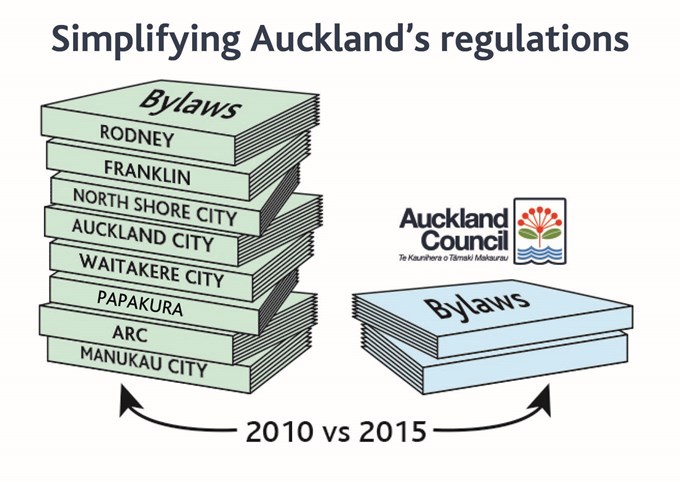The introduction of New Zealand’s first ‘super city’ was a unique opportunity for the entire Auckland region to make life easier for our communities: fewer rules and more consistency.
When Auckland Council was established on 1 November 2010, it inherited 158 bylaws from Auckland’s former councils. Government required the council to review all bylaws by 31 October 2015.
The review began with teams of policy, planning and operational staff assessing all the rules. This has resulted in a great outcome; just 20 new region-wide bylaws are all the rules we need.
The new bylaws have, in many ways, been designed to ensure public health and safety as we strive to be the world’s most liveable city. Examples of some of the bylaws include the Public Safety & Nuisance Bylaw, Health & Hygiene, Navigation Safety and Outdoor Fires bylaws.
Getting to this point has not only included a large number of council employees and elected members – the public has also had their say and influenced the decisions made.
As a new council, the bylaws review was a great opportunity to get the public involved right from the start and thousands did via written or oral submissions and public forums. The resulting 20 Auckland Council Bylaws now represent Auckland’s residents, communities and businesses.
By following this process, we now have consistent regulations that apply fairly across the region, creating clear rules residents and businesses can work with.
A bylaw that concerns both business owners and consumers is the Health and Hygiene Bylaw, which was put in place to regulate commercial health and beauty services, particularly those that pierce, burn or break the skin. The council consulted with everyone from industry bodies to consumers, as well as the Cancer Society regarding the use of sunbeds.
With the introduction of this bylaw we were not only the first local authority to ban under 18’s from sunbed use, we introduced mandatory licensing and a code of practice for these commercial services. Through this bylaw we were able to promote the value of meeting health regulations and protect the public.
Another example is the Navigation Safety Bylaw which was introduced to put the onus on the skipper in charge of the vessel. Getting the message across to boaties to take two forms of communication with them and have everyone on board wear a lifejacket may not have originally gone down well with some, but in the end it’s about being safe on the water.
Other outcomes of the bylaw review programme have seen efficiencies of services, aligning of fees and consistency of processes. Council staff across the region now all work the same way whether dealing with an application or licence from Papakura or Orewa.
As a territorial authority, Auckland Council will always have regulations but we now have smarter rules that really are designed to work for Auckland’s residents, communities and businesses.
Cr Calum Penrose
Councillor Penrose is the Chair of the Regulatory & Bylaws Committee


